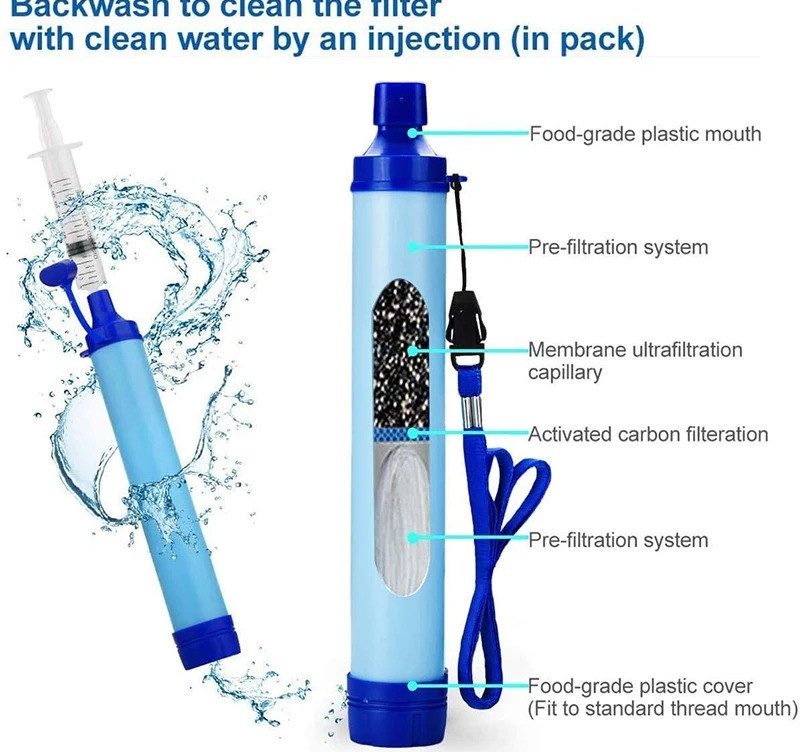
Understanding Portable Water Filter Specs for Rural Schools
In our previous blog post, we explored the transformative power of portable water filters for rural African schools. They offer a simple solution with far-reaching benefits for children’s health and education. But with various filter options available, choosing the right one requires understanding the technical specifications. Let’s delve deeper into this crucial aspect.
Demystifying the Specs:
Portable water filters employ different technologies to remove contaminants from water. Here’s a breakdown of some key technical terms you’ll encounter:
- Micron Rating: Measured in micrometers (µm), this indicates the size of the smallest particles the filter can remove. For example, a 0.1-micron filter removes particles larger than 0.1 µm, effectively tackling bacteria and protozoa.
- Filtration Technology: Different methods are used to achieve purification. Common ones include:
- Mechanical Filtration: Uses physical barriers like ceramic elements or mesh screens to trap larger particles.
- Activated Carbon: Absorbs chemicals like chlorine, tastes, and odors.
- Ultrafiltration (UF): Utilizes a special membrane with microscopic pores to remove bacteria and protozoa.
- Reverse Osmosis (RO): Employs a semipermeable membrane to remove a wide range of contaminants, including viruses. (Note: RO filters often require additional pressure and may not be suitable for all rural settings.)
Choosing the Right Fit:
When selecting a filter for a specific school, consider these factors:
- Water Source: Identify the primary water source (rivers, lakes, wells) to understand the expected contaminants. Bacteria and protozoa are common concerns, but some areas might have additional challenges like chemical pollutants.
- Desired Filtration Level: Based on the water source, determine the level of filtration needed. For most rural settings, UF filters offering bacterial and protozoal removal will suffice.
- Capacity and Flow Rate: Consider the number of students and staff who will use the filter. Choose a filter with a capacity that meets daily water needs and a flow rate that provides quick and efficient filtration.
- Durability and Maintenance: Rural schools might not have access to specialized tools. Look for filters built to withstand everyday use with minimal maintenance requirements. Easy-to-clean or replaceable components are a plus.
- Cost and Sustainability: Factor in the upfront cost of the filter, replacement cartridges, and any additional operating expenses. Explore options with readily available and affordable replacement parts within the community.
Beyond the Basics:
Here are some additional specifications to keep in mind:
- Weight and Portability: For schools with limited storage space, a lightweight and portable design is crucial. This might be particularly relevant during community outreach programs or emergencies.
- Freeze Tolerance: If the filter will be used in regions with freezing temperatures, choose a model designed to withstand such conditions.
- Certifications: Look for filters certified by reputable organizations like NSF International or EPA to ensure they meet specific performance standards.
Working with the Community:
Understanding the technical specifications is important, but it’s equally crucial to involve the local community. Engage teachers, school staff, and community leaders to assess their needs and preferences. They can provide valuable insights into water sources, usage patterns, and maintenance capabilities.
By combining technical knowledge with community input, you can choose a portable water filter that effectively addresses their specific challenges and empowers them to ensure clean water for their children.
Investing in the Future:
Selecting the right portable water filter is an investment in the future of rural schools. Clean water fosters a healthy learning environment, empowers children to reach their full potential, and contributes to a healthier and more vibrant community. Let’s equip these schools with the tools they need, one filtered drop at a time.

